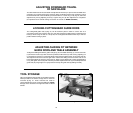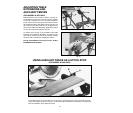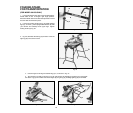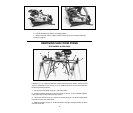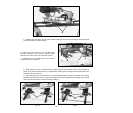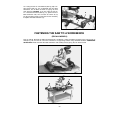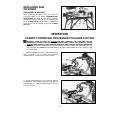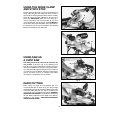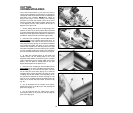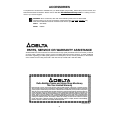
27
Fig. 79
Fig. 80
Fig. 81
Fig. 82
USING THE WORK CLAMP
AND STOCK STOP
Figures 79 and 80 illustrate a compound miter/bevel cut
being made using the work clamp (A), which is used to
firmly hold the work against the table, and the auxiliary
fence (B), which has been adjusted to be used as a
stock stop. IMPORTANT: When the work clamp (A) is
used in conjunction with the stock stop (B), the work
clamp (A) and stock stop (B) Fig. 80, should ALWAYS be
on the same side of the saw blade. This is important as
it prevents the free end of the workpiece from binding
between the blade and the stock stop.
USING SAW AS
A CHOP SAW
The sliding action of the saw must be locked in the
rear position, as shown in Fig. 81, by tightening lock
knob (A), when cutting material that is narrow enough to
allow the saw blade to cut through in a chopping motion.
The cuttinghead (B) is pushed straight down to make the
cut. After the cut is completed, release the switch trigger
and let the blade come to a complete stop before
returning the cuttinghead to the up position.
DADO CUTTING
Dado cutting can easily be accomplished with your
compound slide saw, as shown in Fig. 82, using a single
saw blade and moving the workpiece sideways the width
of the saw blade after each cut. The cut is made in the
conventional way as explained in the section “CORRECT
OPERATING PROCEDURE” and the downward travel of
the saw blade is adjusted for the depth of the dado as
explained in the section “ADJUSTING DOWNWARD
TRAVEL OF SAW BLADE”.
A
A
B
B
A



